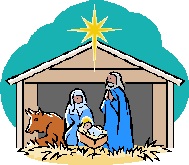Puerto Rico’s ‘Father of Public Education’ Never Went to School
Rafael Cordero y Molina came into this world on October 24, 1790, in San Juan, Puerto Rico. He was born into a low-income family and had two older sisters. His dad, Lucas Cordero, worked on a tobacco farm and his mom, Rita Molina, took care of the children and the home. Although considered “free,” they were also Black, and because of that, their children were not allowed to attend school.
Dedication and determination led him forward
Rafael’s parents had a small amount of education and imparted what they could to their children. Rafael showed an instant love of reading and began to read as much as possible. He developed a passion for literature. That dedication, coupled with his determination to become a teacher, led him on his arduous journey to achieve his goal.
Rafael’s mom and dad did their best to instill the faith into their children. Instruction in the faith by the local priest was open to all. At the age of 14, he received the Sacrament of Confirmation. From that point forward, he would continue to grow in faith and remain a devout Catholic his entire life.
He always refused money for teaching
Rafael began working in the tobacco fields at a young age. When he was twenty years of age, he managed to open a school in the town of San Germán. From the very beginning of his career as a teacher, the young man would never accept any money or gifts for his teaching. His earnings as a tobacco farmer and maker of tobacco products were the only monies he would ever consider using.
Rafael’s school in San Germán was on the street known as Moon of San Juan. In the beginning, it was just Black and biracial children attending his school. As time went by, underprivileged white children also began attending. When racial segregation was a dominant factor in many places around the world, Rafael treated all people the same and never discriminated against anyone.
He would be at this school for the next 58 years. He taught children not only how to read and write, but also arithmetic, history, Catholic doctrine, and even calligraphy. The place was not only a school; it was also his home and a tobacco shop. He would instruct the children, and while they studied, he would roll cigars to sell. On the walls, he had images of Our Lady of Mount Carmel and his patron, St. Anthony of Padua. There also was a large crucifix hanging for all to see.
In 1847 Juan Prim y Prats became the governor. He hated all non-whites and immediately set out to subjugate them. Governor Prim instituted direct repression of Blacks on the island. He decreed the “Bando Negro” law which justified any aggression against Blacks, be they free or slaves. Writings show that Prim visited Rafael’s school several times and, unexpectedly, always approved of its operation. Rafael attributed that to prayer and protection from Our Lady. Prim lasted in power only a year, and all Blacks and people of mixed race on the island breathed a deep sigh of relief.
His reputation as a saintly teacher grew
Rafael Cordero’s reputation as a saintly teacher grew, and more people wanted to send their children to him, including the rich. People began calling him the “Maestro.” Some of those who studied under him included Alejandro Tapia y Rivera, a famous poet, and playwright; Román Baldorioty de Castro, a professor and politician; and José Julián Acosta, the journalist.
“Maestro” Rafael Cordero devoted his entire life to the free education of children and young people. In 1868, sensing the end of his life was near, he called his students together and prayed with them. He gave them his blessing, saying, “My children, pray for this poor old man who has taught you how much he knew. He has nothing left but a breath of life.”
He became known as the father of Public Education in Puerto Rico
A few minutes later, at 5 p.m. on July 5, 1868, he died. Next to him were a burning candle and scapulars sent to his bedside by the Carmelites. More than 2000 people attended his funeral, and he became known as the Father of Public Education in Puerto Rico.
Each year in Puerto Rico, the Rafael Cordero National Medal is given to the annual Teacher of the Year. Schools are named after him in Puerto Rico, Jersey City, N.J., and Brooklyn, N.Y. Finally, the schoolhouse where he taught is registered as a historical site in the National registry of Historical Places of the United States.
A man of heroic virtue
In 2004 the process of Rafael Cordero’s canonization was begun. On December 9, 2013, Pope Francis declared that Cordero had lived a life of heroic virtue and was worthy of the title Venerable.
Venerable Rafael Cordero y Molina, please pray for us.
Copyright©Larry Peterson 2022


